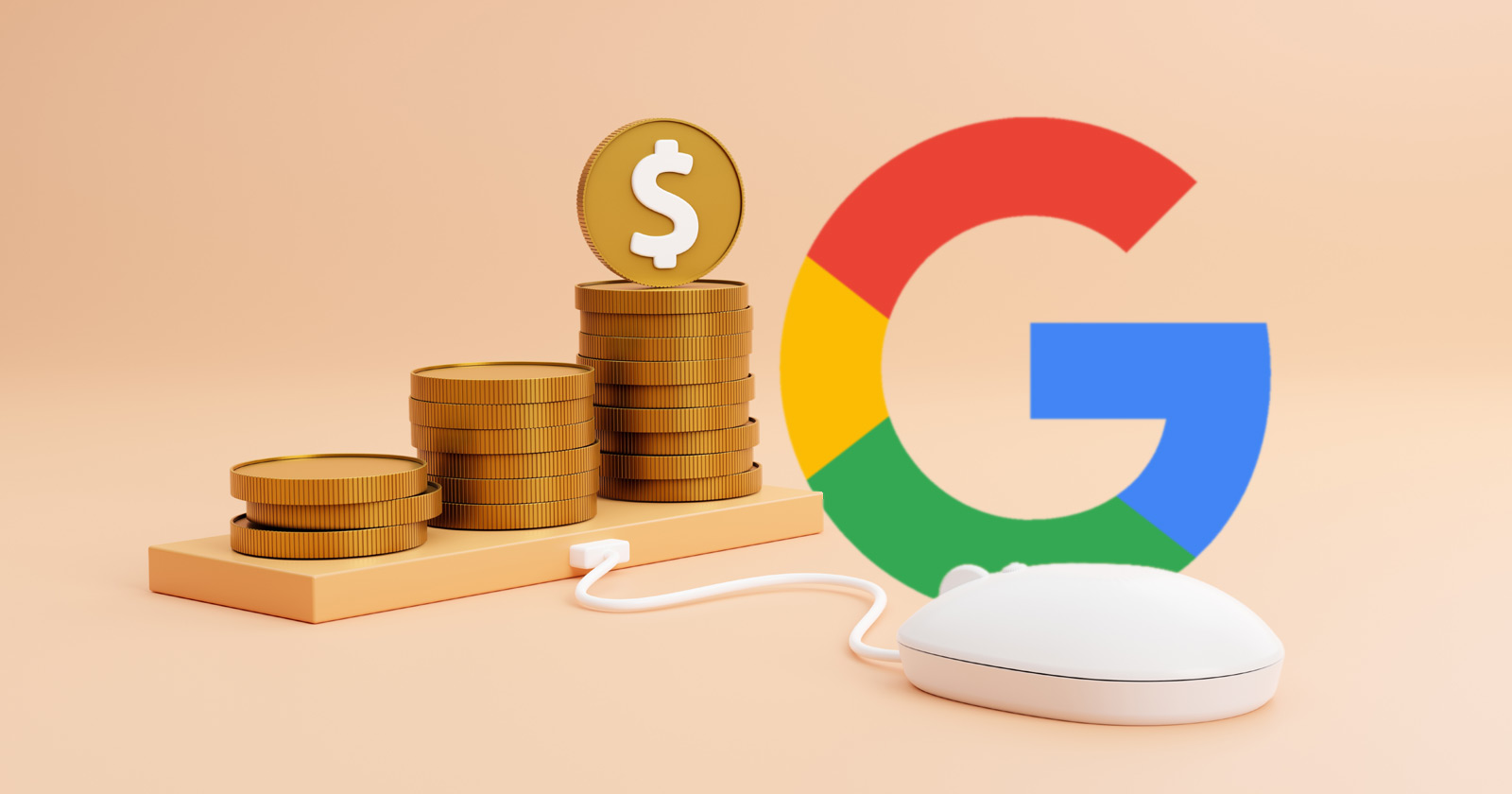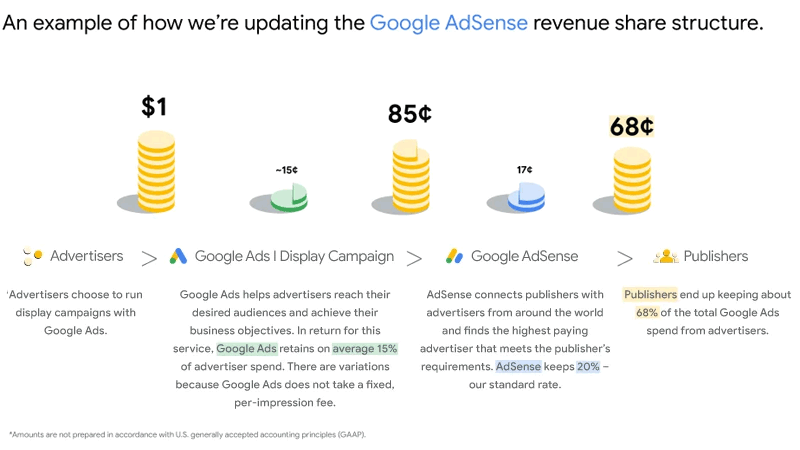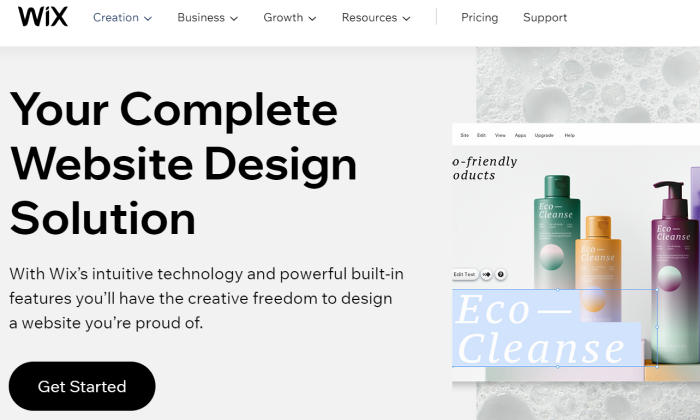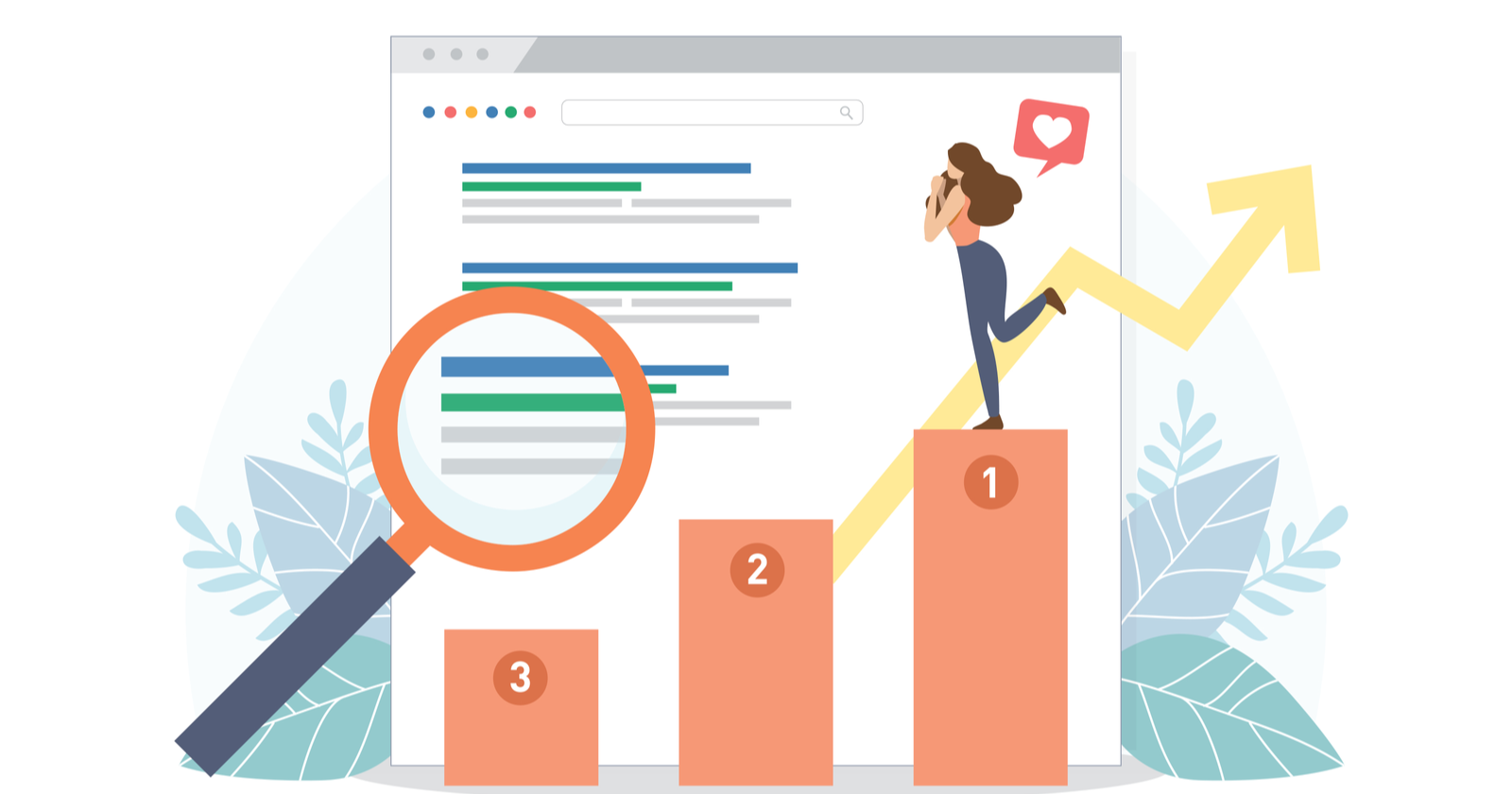AdSense Changing Publisher Revenue Share Structure via @sejournal, @martinibuster
Google AdSense announced a change to the publisher revenue share to an exclusively pay per impression structure The post AdSense Changing Publisher Revenue Share Structure appeared first on Search Engine Journal.

Google announced that it is changing how it pays AdSense publishers, no longer paying per click and switching to exclusively paying on a per impression model.
The announcement assures publishers that the amounts publishers receive should remain the same for most publishers.
Google explained that these changes will go into effect in early 2024.
A blog post on the AdSense blog advised publishers that they are making two changes:
Revenue-share structure will be updated Publishers will be paid by impressionAccording to AdSense, publishers have pocketed 68% of the ad revenue.
Payments under the new payment structure should, according to AdSense, result in publishers receiving “about 68% of the revenue.
The announcement shared the reasons for the change:
“Previously, the Google AdSense network processed fees within a single transaction.
We are now splitting the AdSense revenue share into separate rates for the buy-side and sell-side.
For displaying ads with AdSense for content, publishers will receive 80% of the revenue after the advertiser platform takes its fee, whether that be Google’s buy-side or third-party platforms.
For example, when Google Ads purchases display ads on AdSense, Google Ads will retain on average 15% of advertiser spend.”
In the above example, Google takes a cut of about 15% of the fee paid by the advertiser.
In the case of an advertiser spend of one dollar, Google Ads keeps about 15 cents, with the remaining 85 cents going into the AdSense side.
Of the remaining 85 cents, Google AdSense takes a cut of 20% (equal to 17 cents) out of the 85 cents (the amount that is leftover after Google Ads took 15 cents as their fee).
In the above example, Google AdSense takes 17 cents and the publisher gets to keep the other 80% (of 85 cents), which equals 68 cents.
Google shared an image showing how this works:

New AdSense Pay Per Impression Pay Structure
Google AdSense assures publishers that the new pay structure will not affect the type of ads shown on publisher websites nor the amount of ads shown.
The blog post explained:
“In addition to updating our revenue-share structure, AdSense will soon transition from primarily paying publishers per click to the display industry standard of paying per impression.
This update will provide a more uniform way for paying publishers for their ad space across Google’s products and third-party platforms, helping them compare with other technology providers they use.”
Publisher Reaction
AdSense publishers who post on WebmasterWorld tend to be wary of changes made to the AdSense program.
A discussion in the WebmasterWorld AdSense forum showed a mix of skepticism and hope.
Wait and See
On WebmasterWorld some publishers cautioned to wait and see before making assumptions about the outcome for publishers.
Other publishers posting on the AdSense Forum on WebmasterWorld were skeptical of Google’s motives, writing:
“I think the bottom line is it will make more money for Google, or they would not be making the change.”
Revenue Share Might Be Bad For Users And Advertisers?
Someone else shared that the pay per impression structure might incentivize publishers to put more ads on a page to show more impressions.
They also expressed the opinion that some publishers may begin to not care whether the content is good for advertisers or not.
In general, an advertiser depends on audiences clicking an ad and starting or continuing their customer journey and making an purchase.
But if a publisher no longer needs to create content that can lead to a click then this might cause a loss for advertisers.
WebmasterWorld member Andem shared their opinion:
“I have a really bad feeling about this.
My main concern is that we’ve spent a lot of time over the years trying to find an optimal user experience with ad placements and have done really well with such a limited number of ads but pretty good engagement/CTR surrounded by high quality content. Targeting is usually pretty spot on, too.
Are we going to have to switch from a great user experience to just filling up the page with ads without having to think of where they may provide advertiser value?”
Pay Per Impression Might Be Good For Publishers
Another publisher named Skips observed that the change is probably good for Google:
“…this is meant to make more money for Google.
Just because that’s what corporations are for – create money for shareholders in the end of the day.”
Skips nonetheless shared the opinion that moving to a pay per impression model may be better for publishers.
The reason is because some ads simply don’t generate clicks, which means that publishers don’t get paid for showing those ads.
But under the new system the publishers will receive payment for showing those ads, even if nobody clicks on them.
Skips wrote that the change to pay per impression might result in a positive outcome for publishers:
“CPM-based can be a good thing.
Especially, for cases when you are fed cheap ads that tend to have quite low CTR as well – because advertisers with low budgets don’t typically hire professional teams for creating good ads.
So, if we would be given a predictable CPM that would be great – earnings would be predictable and proportional to the work we do by creating content and attracting traffic.”
Skips makes a great point about how pay per impression may work out better that pay per click for some publishers.
Publishers will no doubt keep an eye on revenues once the new system goes into effect.
Read Google’s Announcement:
Updates to how publishers monetize with AdSense
Featured Image by Shutterstock/LADYMAYPIX

 FrankLin
FrankLin 










![Are Brand Keywords Valuable For Every Audience? [Case Study] via @sejournal, @jonkagan](https://cdn.searchenginejournal.com/wp-content/uploads/2022/03/brand-search-622f3cd66ef3d-sej.png)




















